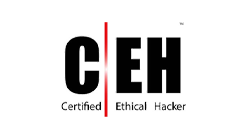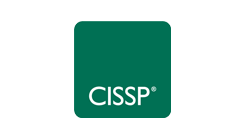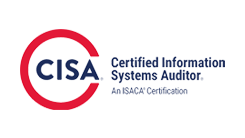Web Application Pen Testing Services
Testing for security vulnerabilities is essential to protect both, the web applications and its users from potential threats.

What is Web Application Penetration Testing?
Web application penetration testing is the process of evaluating the security of a web application by identifying potential vulnerabilities that could be exploited by attackers.
It involves simulating real-world attacks to identify weaknesses in the web application’s infrastructure, configuration, and code. This testing is essential for ensuring the security and reliability of web applications that handle sensitive information.
Penetration testers use a range of techniques and tools to identify security flaws and suggest recommendations for addressing them. By performing regular penetration testing, organizations can improve their security posture and minimize the risk of cyber attacks.
Clients











Web Application Pen Testing Methodology
At WATI, our team follows a detailed step-by-step process for testing websites or web applications:

Initial Scoping
We start by identifying any specific use case or driver behind the assessment. While sometimes it is driven simply by a need to better understand your security posture, other motivators might include;

Compliance
Many industries and organizations are required to comply with specific regulations and standards, such as ISO27001, Soc2Type2. VAPT can help ensure compliance by identifying vulnerabilities and providing recommendations for addressing them.

Risk Management
VAPT can help organizations identify potential vulnerabilities and assess the risks associated with them. This information can be used to prioritize which vulnerabilities should be addressed first and to develop a plan for addressing them.

Mergers and Acquisitions
When two companies merge or one company acquires another, it’s important to ensure that the security of the acquired company is adequate. VAPT can help assess the security posture of the acquired company and identify any potential vulnerabilities that need to be addressed.

New Systems and Applications
Before deploying new systems and applications, it’s important to ensure that they are secure. VAPT can help identify any potential vulnerabilities in the new systems and applications, and provide recommendations for addressing them.
Reconnaissance
Reconnaissance is the first step in the VAPT process, and it involves gathering information about the target website and web application.
We leverage a variety of reconnaissance techniques:

Vulnerability Detection
Vulnerability detection in web applications is the process of identifying and assessing potential security weaknesses in a web application. This can include both known vulnerabilities, such as those listed in the Common Vulnerabilities and Exposures (CVE) database, as well as unknown vulnerabilities that have not yet been identified.
It is important to note that vulnerabilities can be discovered in different parts of web application. Some common vulnerabilities include:
SQL Injection | Cross-Site Scripting (XSS) | Broken Authentication and Session Management | Cross-Site Request Forgery (CSRF) | File Inclusion
There are several methods for detecting vulnerabilities in web applications, including:
This involves manually reviewing the source code and configuration of a web application to identify potential vulnerabilities. This method is typically carried out by security experts.
This involves using software tools to automatically scan a web application for known vulnerabilities. These tools can include web application scanners, which are designed specifically for web applications, and general-purpose vulnerability scanners, which can scan for a wide range of vulnerabilities across different types of systems and applications.
False Positives Removal
A false positive in web application vulnerability assessment and penetration testing (VA/PT) is when a tool or technique incorrectly identifies a potential vulnerability that does not actually exist. False positives can be a problem in VA/PT because they can cause unnecessary alarms and distractions, and can make it more difficult to focus on real vulnerabilities that need to be addressed.
There are several ways to remove false positives in web application VA/PT:
It’s important to note that False positives are an inherent part of vulnerability scanning and some of them cannot be removed. However, with the methods mentioned above, you can minimize the impact of false positives on your VA/PT results and more effectively focus on addressing the real vulnerabilities in your web application.
One of the first steps in removing false positives is to recheck the results and verify that the identified vulnerabilities are real. This might involve manually reviewing the source code or configuration of the web application, or conducting additional tests to confirm the existence of a vulnerability.
Using multiple scanning tools to test for vulnerabilities can help to reduce the number of false positives, as each tool may have different capabilities and may identify different vulnerabilities. By using multiple tools, it will be possible to cross-check the results to help identify false positives.
Some web application scanners allow you to adjust the level of sensitivity and configure various options to fit the type of your web application. By adjusting the sensitivity level, it will help to reduce the number of false positives.
In some cases, certain pages or functionality of a web application may be known to be secure, and you may want to exclude them from being scanned. To achieve this, you can use a feature known as whitelisting which allows you to specify which parts of the web application should not be scanned.
There are software that specialized in removing false positives in VA/PT scans result and some of them can be integrated with the scanners to automatically remove them before they are presented to the analysts.
Penetration Testing

Penetration testing, also known as “pen testing” or “ethical hacking,” is a method of evaluating the security of a web application by simulating an attack from a malicious actor. The goal of a penetration test is to identify vulnerabilities in the web application that could be exploited by an attacker, and to assess the impact of those vulnerabilities on the security of the system.
Penetration testing typically involves:
Exploitation:
In this stage, the tester attempts to exploit the vulnerabilities identified in the previous stage in order to gain access to the web application or too-sensitive data. This might involve exploiting SQL injection flaws, cross-site scripting (XSS) vulnerabilities, or other types of vulnerabilities.
Post-Exploitation:
In this stage, the tester assesses the access and privilege they have obtained and attempts to escalate their access, steal sensitive information, or carry out other malicious actions.
Remediation suggestions
Remediation refers to the steps taken to address the vulnerabilities that are identified during the VAPT process. Here are some general suggestions for remediating vulnerabilities that are commonly found in web applications
Why Web Application Pen Testing?
There are several methods for detecting vulnerabilities in web applications, including:
Our Web Application Testing Team
Certifications










Let’s Talk
Reach Out to Us for Comprehensive Web Application Pen Testing Solutions
Protect your business and customers from cyber threats with our Web Application Pen Testing services. Let our team of experts identify and resolve any security issues with your web application.
